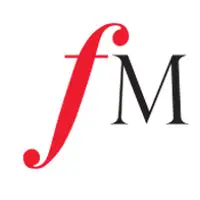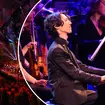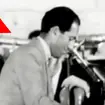Rhapsody in Blue: How Gershwin’s hastily composed ‘jazz concerto’ became his greatest masterpiece
12 February 2024, 17:48 | Updated: 12 February 2024, 17:58
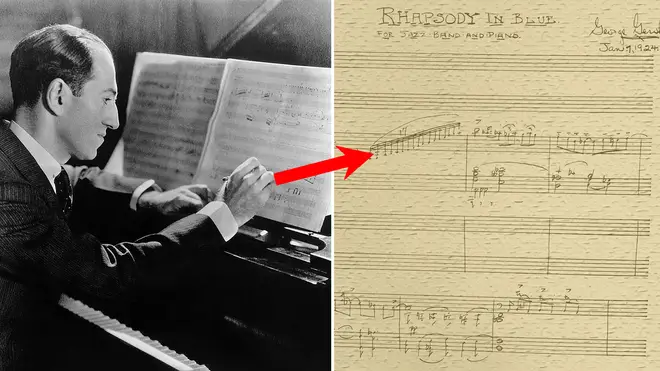
Gershwin first found out he was meant to be writing ‘Rhapsody in Blue’ from a newspaper announcing its premiere... just over a month away. Here’s the remarkable story of its creation.
Listen to this article
George Gershwin’s Rhapsody in Blue stands out as one of the great symphonic contributions of 20th century classical music, certifying its author’s place in the history books as one of the most celebrated American composers of his era.
Such a monumental work must have taken months, if not years to write – or so you might think. But Gershwin only found out he was supposed to be writing the piece the month before its premiere!
The composer had been enjoying an evening in New York’s Ambassador Billiard Parlor on 52nd Street and Broadway, with his brother, Ira, and lyricist Buddy DeSylva.
The trio were relaxing in the smoke-filled parlour after a game in the small hours of 4 January 1924, when an item in the amusement section of that morning’s New York Tribune caught Ira’s attention.
The article announced a concert taking place on 12 February, in just over five weeks’ time. It was to be a celebration of all-new American music marking the anniversary of former President Abraham Lincoln’s birthday, given by Paul Whiteman and his Palais Royal Band at the Aeolian Hall.
“George Gershwin is at work on a jazz concerto,” it read. “Irving Berlin is writing a syncopated tone poem...”
It was all news to Gershwin. His musical comedy, Sweet Little Devil, was set to open in just three weeks – and now he had to write a concerto by 12 February as well?!
Read more: This rare video of Gershwin playing piano is pure musical magic

Cellist performs arrangement of George Gershwin's Rhapsody In Blue
Paul Whiteman, the man behind the concert, was the most popular bandleader of the 1920s. Nicknamed the ‘King of Jazz’, his ensemble was essentially a large dance orchestra, that often enlisted jazz musicians to its line-up.
It was Whiteman who eventually twisted Gershwin’s arm and persuaded him to accept the job. All he had to do, Whiteman told him, was supply the piano score. Ferde Grofé, Whiteman’s brilliant in-house arranger, would then orchestrate it specially for the band.
Gershwin was won over. Whilst on the train to Boston for rehearsals ahead of his musical’s opening night, he began to sketch out the framework for the new piece.
He began writing in earnest on 7 January, and over the following days and weeks completed a two-piano score for Rhapsody in Blue, all the while making last-minute changes to prepare Sweet Little Devil for its 24 January premiere.
What Gershwin wrote was not a ‘jazz concerto’, as the New York Tribune had promised. Instead, he had composed a rhapsodic work for ‘piano and jazz band’, a meeting of European symphonic music and American jazz, brought together with his inimitable melodic gift and piano prowess.
Rhapsody in Blue’s most iconic moment, however, wasn’t actually written by Gershwin. He’d started his piece with a simple scale for solo clarinet, but his clarinettist Ross Gorman decided to play a little prank on the composer during rehearsal.
Beginning the scale, Gorman played a dramatic glissando up to the top note. Gershwin was immediately impressed, and asked him to repeat the technique in the premiere performance.
Read more: Mighty jazz musician plays tiny soprano trombone in ferocious brass solo
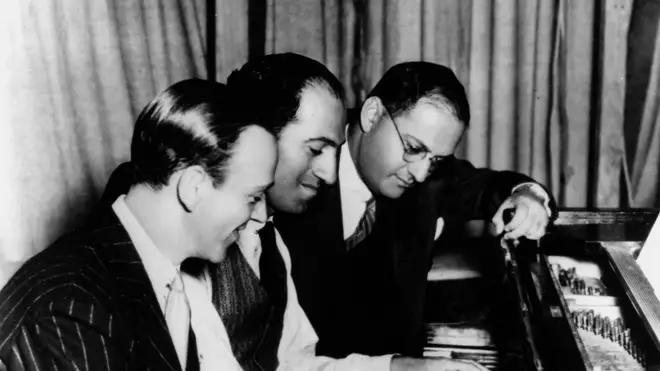
Gershwin originally called his piece ‘American Rhapsody’, but inspiration for its later poetic title was just around the corner.
Returning from an art exhibition of James McNeill Whistler’s work, Ira Gershwin had been enraptured by the painter’s Nocturne In Blue and Green, of the Thames at Chelsea. He suggested to his brother, why not call the new piece Rhapsody in Blue?
George agreed – the new title was the perfect fit to reflect both European and American influences in the work. He would also incorporate, at Ira’s suggestion, a lyrical and romantic theme he’d improvised at a party, to contrast with the lively syncopation that characterises much of the melody.
Rhapsody in Blue received its premiere on 12 February, with its composer as soloist, to a packed Aeolian Hall. In the audience were some of the early 20th century’s greatest musical figures: luminary composer Sergei Rachmaninov, violinist Fritz Kreisler, and eminent conductor Leopold Stokowski.
The premiere was a triumphant success. And so, from just five weeks’ work in early 1924, was born one of the great American masterpieces, hailed today as a landmark in musical history.

